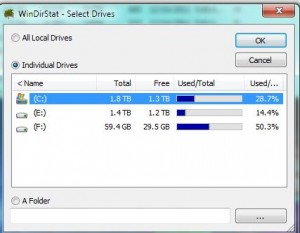Once you have figured out where all of your stuff is, including documents, photos and videos, it’s time to sort it all out and back it up. Sure, you could dump everything onto one or more DVDs but it makes more sense to organize things a bit beforehand. In this case, photos are more important to arrange than anything else because the files names are arbitrary unless you rename every one. Once you have the various folders in one place, you can sort them out by date, naming the separate folders by when you took the photos or by subject, if all of the photos in a folder can be identified by a few words.
Videos can be named or arranged by date but taking a bit of time now to rename each avi file will make it easier to find what you are looking for at some point down the road. If you have recorded any HDTV shows that you want to save, make sure you convert them to XVID files using Format Factory or Handbrake to save storage room. Both programs do a fine job of transferring recorded video files to the DIVX or XVID format. The file choice is optional, of course. Use the type of file that you’ve had experience with and works best with your other hardware.
We should mention now that some programs save their files in places other than My Documents. CamStudio, for instance, saves its avi files in the CamStudio main folder. There is a link to those files in My Documents but that is only a shortcut. The files themselves are kept somewhere else. This also applies to Audacity. When you have been working on an audio file in Audacity and you haven’t completed your work, it’s a good idea to back up all of the Audacity files BEFORE you lose them in a hardware crash. Once you export your files in Audacity, you can choose the format and, if you are satisfied with your efforts, you can get rid of the working files. But if you are still working on the files, save them. You’ll find them in the main Audacity folder, not in My Documents.
If you’ve been diligent about telling each program where you want it to save your work, your job is much easier when it comes to backing up your computer.
What’s next? Well, we use Burnaware to make backup DVDs. Burnaware is fast, stable and free. Since DVDs are relatively cheap, we can get 100 for less than $20, you might even want to make backups of backups for important files. Keep each backup in a separate place, maybe even distributing family memories to various relatives. Mark the disks with a Sharpie and put them in a protective package which is also clearly marked with the date and some descriptive words.
Lastly, think about backing up any material that’s ‘in the cloud’. Dropbox is about as secure as you can get but who knows what their financial status is? Backup the Dropbox folder on your computer whenever you back up everything else. That backup isn’t dynamic, of course, so be sure to only use it as a backup in case of emergency. Don’t try to integrate the old files with your current Dropbox files at some date later on. Saving old files over newer files never works.
We can’t hold your hand all the way through but we’re here to help. If you have questions, ask us. Comments are welcome, yays or nays, it doesn’t matter.
Thanks for reading!


